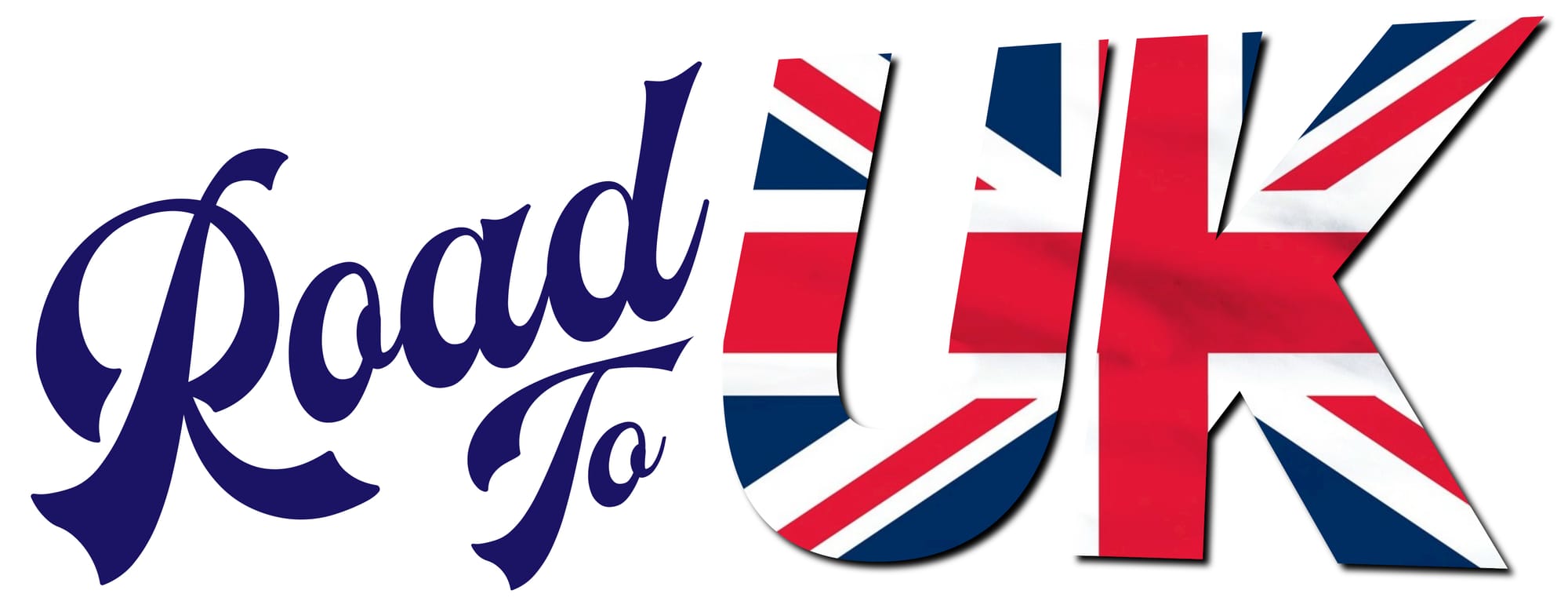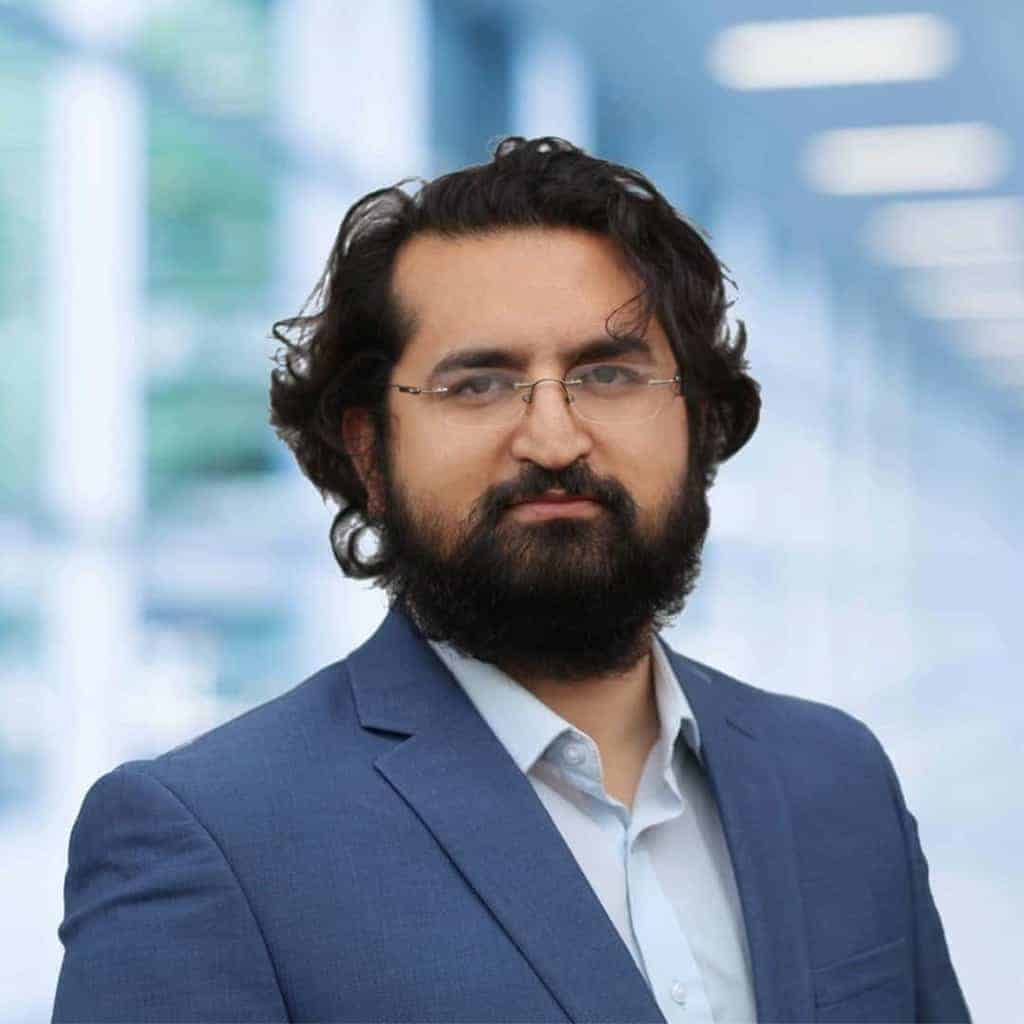Specialty Training in Anaesthesia in the UK
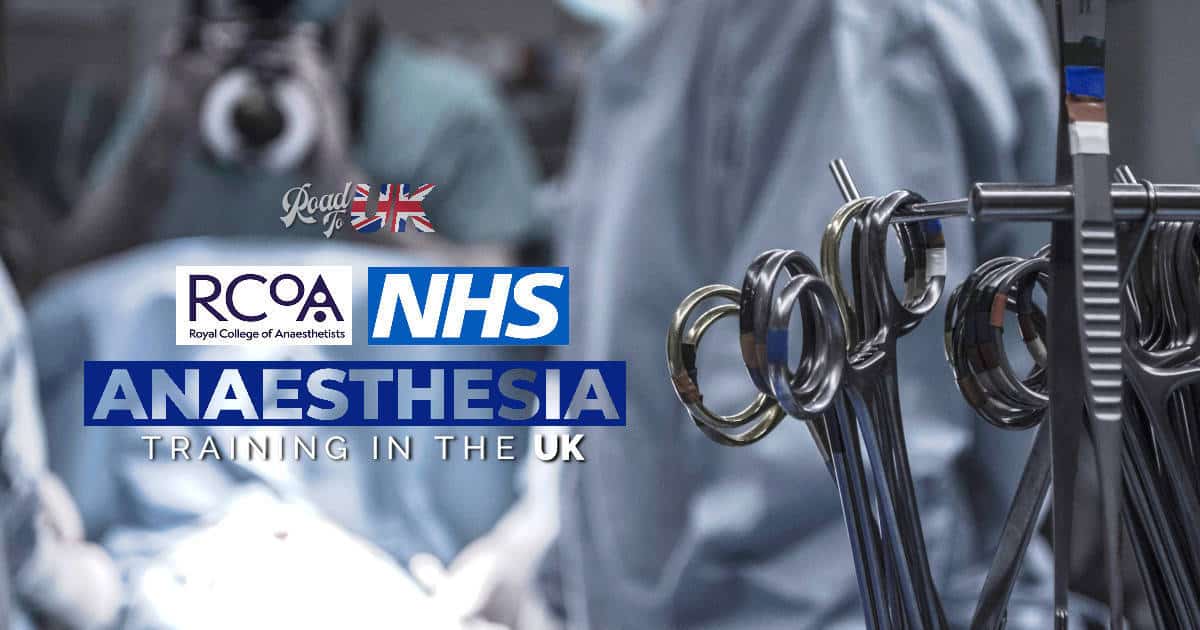
Anaesthesia is one of the biggest workforces of the hospital and a highly sought after training for a doctor in the UK. Royal College of Anaesthetists (RCOA) look after the training in the UK and hands down their website would be the first place to go if you need any updated information. In this article, we will mainly discuss how an international medical graduate (IMG) can plan for getting into anaesthesia training in the UK, from different levels.
The stages of training
Distinctly there are four levels of anaesthesia training:
- Basic or Core level (2 to 3 years)
- Intermediate level (2 years)
- Higher level (2 years)
- Advanced level (1 year)
So the entire training program leading to Certificate of Completion of Training (CCT) is 7 to 8 years. The extra one year depends on your route of entry to the training.
Special areas of training in anaesthesia
Apart from training in anaesthesia, the following sub-specialties are closely related:
- Intensive Care Medicine (which is a specialty in its own right)
- Pain Medicine
- Pre-hospital Emergency Medicine
Let’s look at some statistics
The statistics above are for the Round 1 fill-up rate for the CT1/ST1 specialties. We can clearly see a few important points:
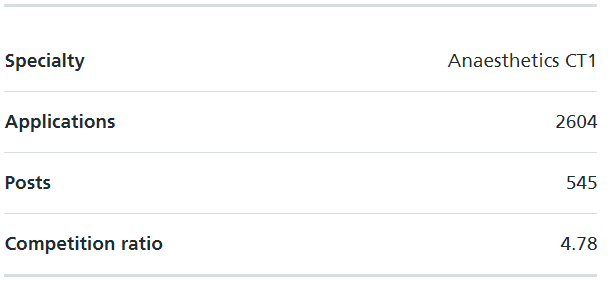
- The number of posts open for anaesthesia training in the UK is less compared to internal medicine and GP, thus making it very competitive to enter.
- The acceptance rate is was 100% for 2023, showing those who obtained a seat took the offer.
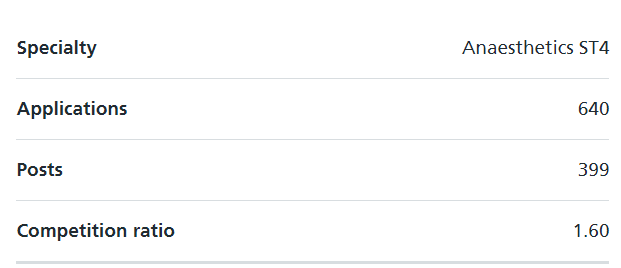
Prior to anaesthesia training in the UK
Anaesthetics training in the UK is not a run-through training. Two recruitment process happens at the basic/core level (CT1) and the intermediate level (ST3). Primary FRCA exam is in between them. We will be talking about the whole path shortly.
If you are an International Medical Graduate (IMG), the very FIRST target is to obtain the GMC registration with a license to practice. If you are unsure in what ways you can get that, please read How to get registered with the GMC UK.
All the following discussion needs a prior clear idea about how the specialty training in the UK are structured, please read the Overview of the Specialty Training in the UK, if you haven’t already.

The structure of anaesthesia training in the UK
Basic or Core Level (CT1-2 or ACCS)
As mentioned earlier, the training in anaesthesia starts from the basic or core level. Before you can apply for this level you must have to have three things:
- Full GMC registration with a license to practice
- Foundation competencies a.k.a Certificate of Readiness to Enter Specialty Training (CREST)
- Less than 18 months of total clinical work experience in anaesthetics.
If you have fulfilled the above criteria, then you can take any of the two routes of entry:
- Core Anaesthesia Training (CAT) (2 years)
- Acute Care Common Stem (ACCS) Anaesthetics (3 years)
What is Acute Care Common Stem (ACCS)?
ACCS is a 3-year alternative core training programme for trainees wishing to enter Higher speciality training in General Internal Medicine (GIM), Acute Internal Medicine (AIM) or Anaesthetics, and the main core training module for Emergency Medicine. It will deliver all elements of the speciality-specific core training curricula, with additional augmented outcomes i.e. competencies beyond those areas covered by GIM and anaesthetics.
- The first two years are spent rotating through Emergency Medicine (EM), General Internal Medicine, Anaesthetics and Intensive Care Medicine (ICM).
- The third-year is spent providing training that will ensure the trainee meets the minimum requirements for entry into higher specialty training in their parent specialty (EM, GIM/AIM, Anaesthetics and also ICM).
So being an ACCS – Anaesthetics trainee, you are being well rounded in all aspects of dealing with an acutely ill patient, where Core anesthesia training is the anaesthetics part of the whole picture.
Intermediate Level (ST3-4)
The intermediate level is two years in duration and introduces trainees to specialist areas of anaesthesia which includes cardiothoracic anaesthesia and neuro anaesthesia. The recruitment happens at this level and the main points of eligibility are as below:
- Full GMC registration with a license to practice
- Primary FRCA OR having an exempting qualification.
- Evidence of achievement of CT2 competences in Anaesthetics and Intensive Care Medicine (including Initial Assessment of Competency).
- At least 24 months experience Anaesthetics and/or Intensive Care Medicine.
How to achieve CT2 competences in Anaesthetics
There are two ways you can achieve that:
- The obvious one is being in the formal basic/core level anaesthesia training in the UK and obtaining the Basic/Core level training certificate by completing the training.
- Working in the non-training anaesthetics jobs in the UK and collecting enough proofs to satisfy your Regional Adviser Anaesthesia (RAA) or a Deputy Regional Adviser (DRA) to issue a Basic/Core level equivalence certificate. The following supporting documentation has been deemed appropriate evidence and should be used as guidance only:
- Initial assessment of competence (IAC)
- Initial assessment of competence in Obstetric anaesthesia (IACOA)
- Sign off of the core clinical learning outcomes (the Assessment Guidance document can be adapted to aid recording)
- Any ARCPs conducted
- Success in Primary FRCA or having exempting qualification
- An outline CV
- Support of the current College Tutor
- For detailed guidelines see annex B of the Anesthesia CCT curriculum.
Exemptions from Primary FRCA examination
If you already have any of the following qualifications and related training, you can be exempted from taking the Primary FRCA exam, given RCOA’s discretion.
- The Fellowship of the Australian and New Zealand College of Anaesthetists;
- The European Diploma in Anaesthesiology and Intensive Care of the European Academy of Anaesiology or the European Society of Anaesthesiology;
- Fellowship of the Faculty of the College of Anaesthetists of Ireland;
- Doctor of Medicine (Anaesthesiology) of the University of Colombo, Sri Lanka;
- Doctor of Medicine (Anaesthesia) University of the West Indies before May 2014;
- Fellowship of the College of Anaesthetists of South Africa;
- Certificate of the American Board of Anesthesiology;
- Fellowship in Anaesthesia of the Royal College of Physicians and Surgeons of Canada;
- Fellowship in Anaesthesia of the Bangladesh College of Physicians and Surgeons;
- Fellowship of the Hong Kong College of Anaesthesiologists;
Higher & Advanced level (ST5-6-7)
An intermediate level trainee has to pass the Final FRCA exam in order to proceed to higher training in anaesthetics. The higher level of training is two years in duration and is called post-fellowship training. A further advanced one year of training can be taken by for dual CCT in Intensive Care Medicine (ICM), or pain medicine or pre-hospital emergency medicine.

What can an IMG (non-UK, non-EEA, without a settled visa) do to join Anaesthetics training?
1. Obtaining GMC registration with a license to practice
If you already have any of the following acceptable PG qualifications, then you don’t need PLAB for GMC registration, you can take the accepted PG pathway:
Please note, the following list is for GMC registration, not for the exemption of Primay FRCA examination as stated above in the article.
- Primary FRCA Examination
- Certificate of the American Board of Anaesthesiology
- Fellowship of the Australian and New Zealand College of Anaesthetists
- Fellowship in Anaesthesia or Anaesthesiology awarded since July 1999 (By Bangladesh College of Physicians and Surgeons)
- Fellowship of the Faculty or the College of Anaesthetists of the Royal College of Surgeons in Ireland
- European Diploma in Anaesthesiology and Intensive Care (EDAIC)
- Fellowship in Anaesthesiology awarded since 1998 (By College of Physicians and Surgeons Pakistan)
- Fellowship of the College of Anaesthetists of South Africa
- Doctor of Medicine or MD (Anaesthesiology) (By University of Colombo, Sri Lanka)
- Doctor of Medicine (Anaesthesia) awarded since September 2003 (By University of the West Indies)
Read more here How to get registered with GMC (UK)
2. Getting your CREST form signed
If you are looking forward to getting into basic or core level of anaesthesia training in the UK, one of the primary things that need completing is the Certificate of Readiness to Enter Specialty Training or the CREST form. This form has been updated and modified, so please make sure that you are using the latest version of the CREST form otherwise it WILL NOT be accepted.
The following individuals can sign your competency form:
- Consultants
- GPs
- Clinical Directors
- Medical Superintendents
- Academic Professors
- Locum Consultants with CCT/CESR
The person who signs it must have worked with you for a consecutive 3 months within the last 3.5 years from the start date of the post in question. They do not have to personally witness your completing all of the professional capabilities listed; if there is sufficient alternative evidence at hand that you have demonstrated these capabilities, they can sign you off. Please note that clinical attachments/unpaid rotations WILL NOT count towards the 3-month requirement.
If the individual signing your competencies is registered overseas, it is your responsibility to provide the necessary evidence proving their registration. You must attach proof of their registration along with your CREST form and translate any part of the document as needed. If they have had GMC registration but no longer hold it, it will not be considered.
3. Passing the Primary FRCA examination
If you are not exempted already and targeting to start anaesthesia training in the UK from ST3 level because you have more than 18 months experience in anaesthesia (which have made you ineligible for CT1 level) then passing primary FRCA examination would be the next big target. It has two parts (taken separately):
- Multiple Choice Question Examination (MCQ)
- The Objective Structured Clinical Examination (OSCE) and Structure Oral Examination (SOE)
4. Obtaining Anaesthetics CT2 competencies
If you already passed Primary FRCA examination or have an exempting qualification and have obtained GMC registration and started working in the non-training jobs in the UK, your next target would be achieving this Basic/Core Level Equivalence Certificate which would prove your anaesthetics CT2 competencies and will enable you to apply for ST3 training.
As mentioned already, this certificate can be signed by your Regional Adviser Anaesthesia (RAA) or a Deputy Regional Adviser (DRA). You will have to set clear goals to achieve this by consulting with your senior colleagues in your non-training job. Even being a non-trainee you can maintain the portfolio which will also help you to organise your evidence to get the Basic/Core Level Equivalence Certificate signed.
5. CESR route
Certificate of Eligibility for Specialist Registration (CESR) is a route to be a specialist in the UK, without having to go through any training in the UK. You would have to prove to GMC that the training you received in another country is equivalent to that of the UK with your supporting evidence. GMC will pass your application to RCOA and if approved, you would get registered as a specialist.
Look here for Specialty Specific guidance regarding CESR by GMC.
Good Luck!
